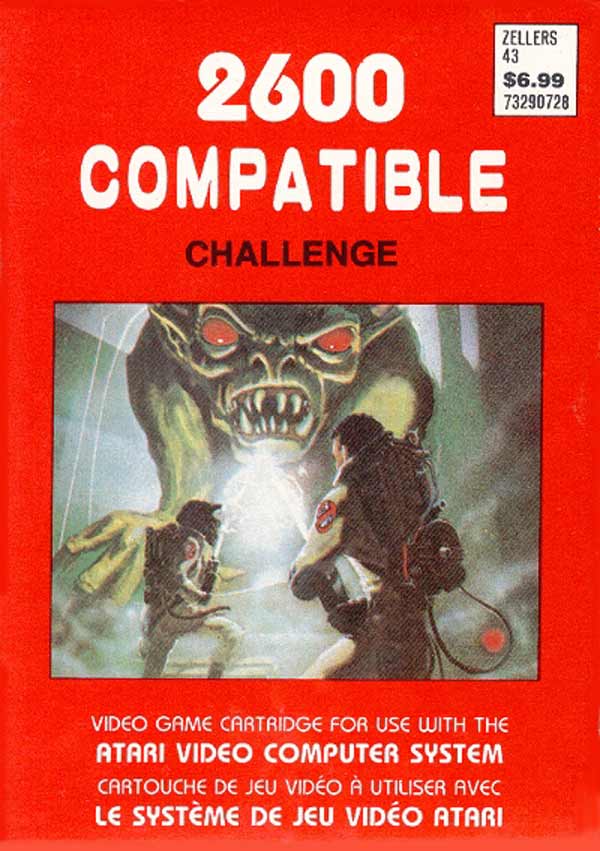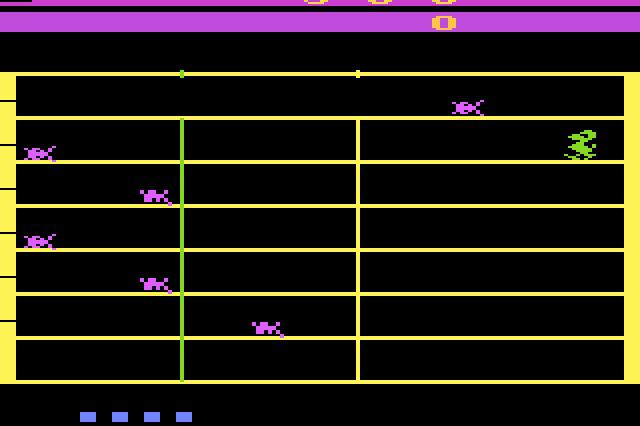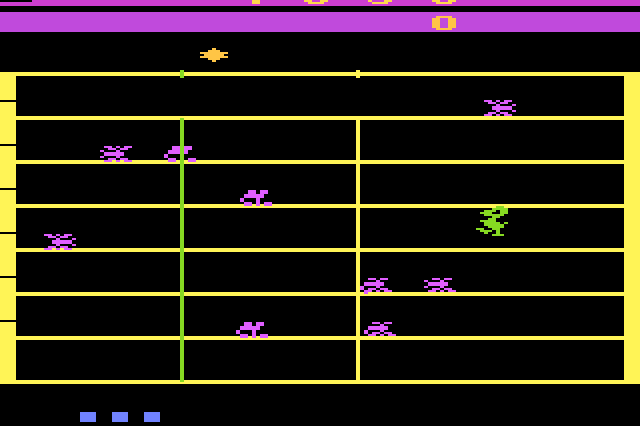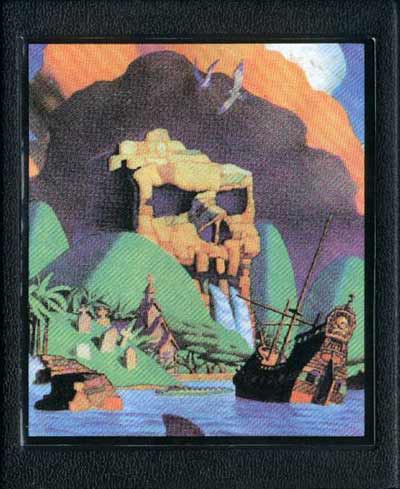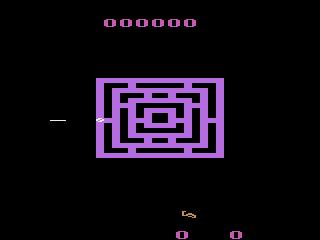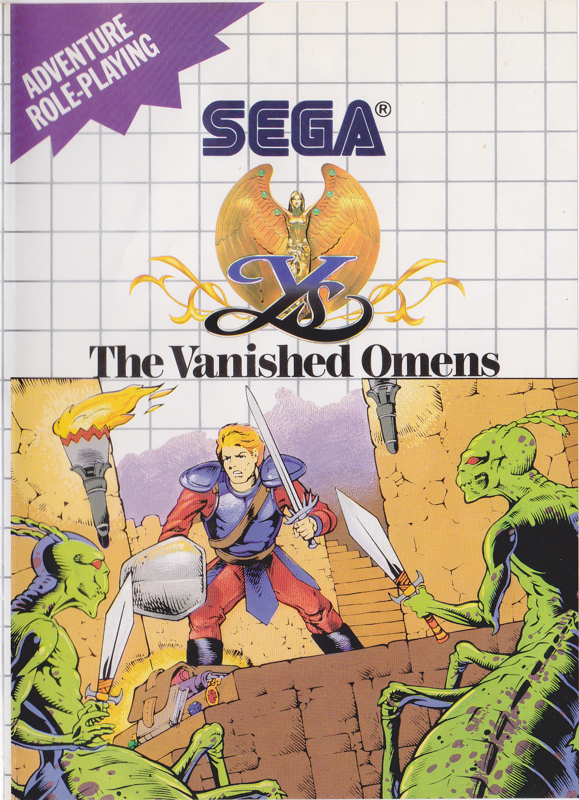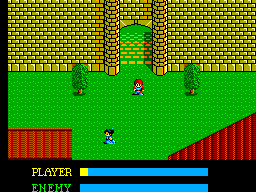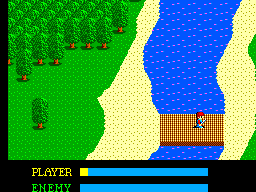Developer: Funvision
Publisher: Zellers
Release Date: No idea
Challenge is a simple game with a boring name, so of course we’re going to talk about that box art. What are the Ghostbusters doing on some random Canadian game about a duck moving through a maze? I wish there was some funny story behind it, but the truth is probably much more boring. Likely it was because Zellers didn’t care, and they were dealing with an unscrupulous Taiwanese bootleg game company. Back home Funvision made fairly generic covers that were frequently reused. The skull mountain image from Inca Gold is probably on dozens of games. For Zellers every game had its own artwork even if it didn’t match the game. Maybe Funvision had run out of their stock images and this was the only one they had lying around. It could’ve also been a simple case of trying to sell a generic game by connecting it with a popular movie. It’s impossible to say for sure, but it’s a bit funny considering Zellers was already getting in trouble with Atari. Did they really want to bring Columbia Pictures into it as well? I know you guys were all the way up in Candada, but half the cast of Ghostbusters was Canadian. What if Rick Moranis saw this while he was visiting his family for Christmas? I suppose it had little impact in the long run though considering no one’s heard of the game or the company. It does make dating these games a little more interesting. I thought Zellers’ scheme was done by 1983, but Challenge couldn’t have been released until the summer of 1984 at the earliest. That was pretty late in the game to be releasing new 2600 games. Most of the 3rd parties had already closed up shop by then. Since this fits into the “Atari 2600 games released after my birth” category I am interested to talk about it. Let’s get started already.
As I previously stated, in Challenge you play as a duck moving through a grid. You follow a path which leads up, left, and down while avoiding a duck’s mortal enemy, the mouse. I know much has been written about the rivalry between these animals, but it can never be said enough. Ducks and mice hate each other. Okay so only the first of the game’s four levels has mice, but the other three creatures aren’t listed in the instructions and I can’t tell what they are. That usually isn’t a good thing, but I’m not going to knock any points off of this game for having unclear graphics. This really could be all squares without hurting the gameplay any, so it’s nice that they even tried. Basically this is a game where you move vertically while avoiding the enemies moving horizontally. It’s all about timing as the different rows will move at different speeds, and you can’t get by purely on memorization. Your goal is to reach the end of the path where you will collect points based on how much time is left on the clock. The game gives you a whole six minutes which is far more than enough so it’s really no hurry. As you move across the screen a positive message will slowly reveal itself which is a nice touch. I like being told that I am very good.
So Challenge is a simple, leisurely paced game that feels more like a car trip toy than a fully fleshed out video game. In spite of this I still had a decent time playing it. The game turns out to have an accurate title, and I always appreciate a good challenge. There’s something satisfying about speeding from lane to lane narrowly avoiding catastrophe. Even waiting for lanes to clear up was interesting because I constantly had to stay on the move. I haven’t been able to get past the second level yet, but I liked the game enough to consider going back and trying again.
I still can’t quite put it in the good section, however. I think it’s too repetitive for it to leave much of an impact on the average person. The game boasts having four different levels, but the only thing that changes between them is the amount of enemies on the screen. It’s the same path with the same goal every time. It’s amusing for a time, but the options are so limited that it gets tedious after a while. Still, it exceeded my modest expectations so that’s a win. It probably helps that I played Inca Gold first. That game would make just about anything look good by comparison.
Challenge actually ended up going farther down on my list than I expected. It’s hard for a simply okay Atari game to get above many other okay games. So it’s all the way down at 99. Hey it made the top 100, which these days isn’t too bad a place to end up. I have rated more games than I expected, so even games down that low are worth a look. It’s number 12 on the Atari list, but there are a lot of good Atari games, so it won’t stay that high for long. Challenge was pretty good for an obscure foreign release and that gives me hope for playing more games that no one has ever heard of. There really are more games than you think.
